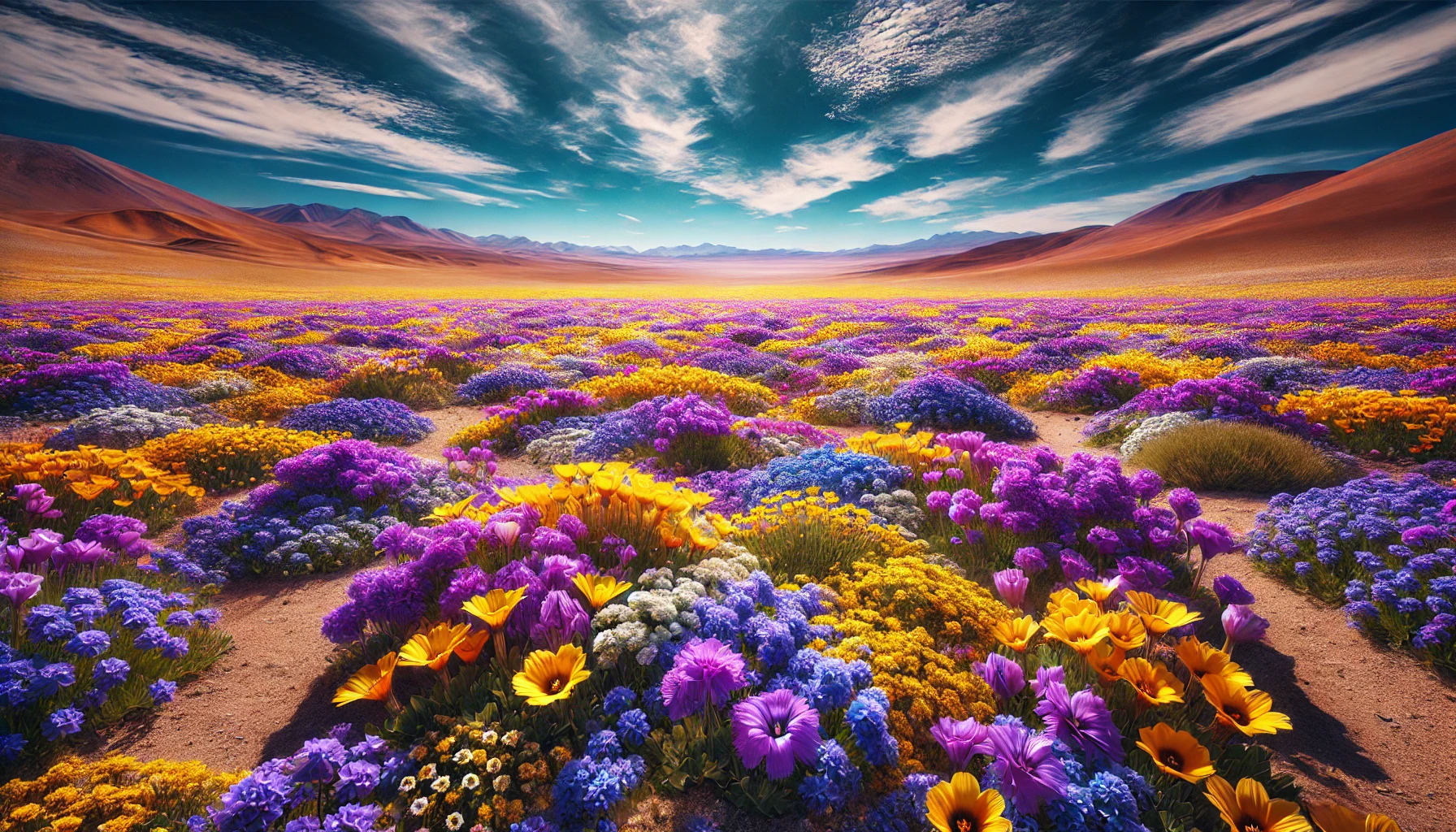The desert bloom is one of nature’s most extraordinary spectacles. Occurring in some of the driest regions of the world, this phenomenon transforms barren deserts into vibrant fields of wildflowers, showcasing the resilience and beauty of nature. Here’s an in-depth look at this captivating event.
What Is a Desert Bloom?
A desert bloom is a natural phenomenon where desert regions experience a sudden burst of flowering plants, usually following periods of significant rainfall. These blooms are characterized by colorful carpets of wildflowers that blanket the arid terrain.
How Does a Desert Bloom Occur?
- Rainfall: Deserts typically receive very little rainfall, but when an unusual downpour occurs, dormant seeds in the soil are triggered to germinate.
- Soil Conditions: The seeds lie dormant for years, waiting for the perfect combination of moisture and temperature.
- Temperature: Warm temperatures following the rain help stimulate rapid growth and blooming.
Famous Locations for Desert Blooms
- Atacama Desert, Chile
- Known as the driest desert in the world, it bursts into life with purple and yellow flowers during rare rainfalls.
- Sonoran Desert, USA and Mexico
- Hosts a stunning variety of cacti and wildflowers, including poppies and lupines.
- Namaqualand, South Africa
- Renowned for its vibrant daisies and endemic species during the spring months.
- Western Australian Outback
- A spectacular display of desert wildflowers, attracting tourists from around the globe.
Why Are Desert Blooms Important?
- Biodiversity: They support pollinators like bees, butterflies, and birds, creating a temporary yet thriving ecosystem.
- Cultural Significance: Many local communities celebrate these blooms as symbols of renewal and hope.
- Tourism and Economy: Desert blooms draw thousands of visitors, boosting local economies.
Best Times to Witness a Desert Bloom
- Seasonal Dependence: Most desert blooms occur in spring or after rare heavy rains.
- Weather Tracking: Keep an eye on rainfall patterns and forecasts for the best chance to witness this rare event.
Tips for Photographing Desert Blooms
- Capture the Scale: Use wide-angle lenses to show the vast expanse of flowers.
- Close-Ups: Highlight intricate details and colors of individual blooms.
- Golden Hour: Shoot during sunrise or sunset for dramatic lighting.
Conservation of Desert Blooms
As desert blooms become popular tourist attractions, it’s crucial to protect these fragile ecosystems. Visitors should avoid trampling flowers and follow designated paths to minimize impact.
The desert bloom is a fleeting yet unforgettable reminder of nature’s ability to thrive against all odds. Whether you’re a nature enthusiast, a photographer, or a traveler, witnessing a desert bloom is a truly magical experience.

